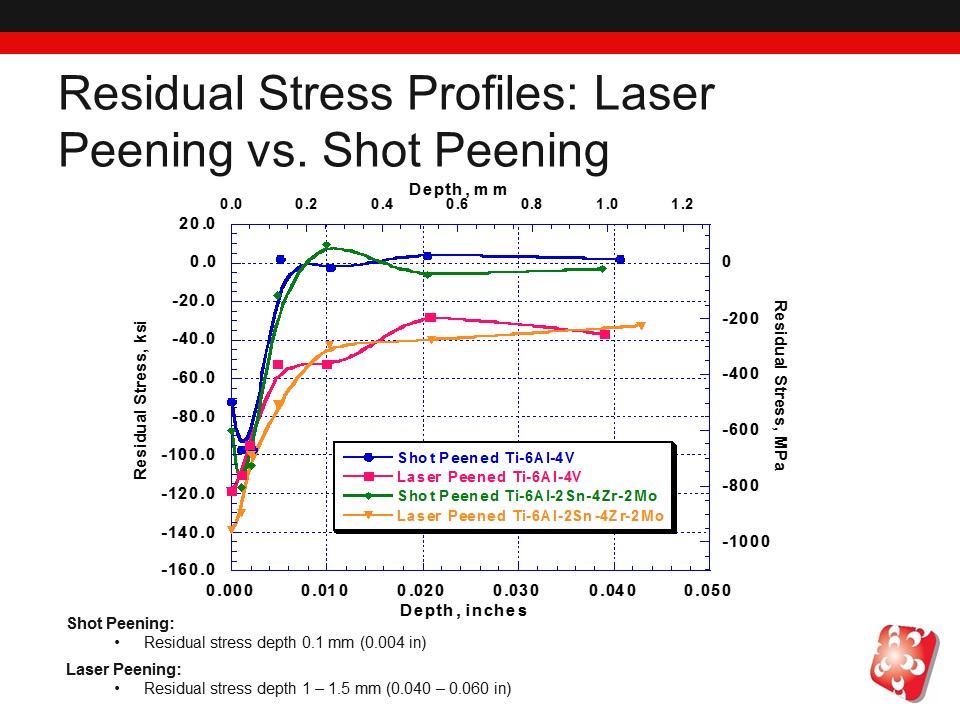Shot Peening Falls Short of Laser Peening in Residual Stress Comparison
Laser peening imparts significantly deeper compressive residual stresses than shot peening
Posted: March 7, 2017
By:
Metal Fatigue Prevention
Metal fatigue failure typically results from microscopic crack formation at the surface of the material. Cracks may initiate due to cyclic loading, foreign object damage, or corrosive environments, and cracks will propagate with successive loads or continued exposure until failure occurs.
Enhancing materials through the introduction of compressive residual stresses inhibits the initiation and propagation of fatigue cracks. Compressive residual stresses provide a counterbalance to the tensile stresses present at the part surface, and the compressive environment slows the propagation of microcracks. Deep compressive residual stresses provide enhanced fatigue resistance, and can significantly extend the fatigue life of a metal part.
Shot peening is a surface enhancement process used to impart compressive residual stresses into fatigue-prone metals. Shot peening is performed by impacting the material with high-velocity pellets or beads, imparting a shallow layer of compressive residual stresses beneath the part surface.
Laser peening (LSP) produces compressive residual stresses by using a high-energy, pulsed laser to generate a confined plasma burst on the surface of a metal part. The rapid expansion of the plasma produces a pressure pulse that propagates into the material as a compressive stress wave.
Shot Peening vs. Laser Peening
Laser peening imparts significantly deeper compressive residual stresses than shot peening, making LSP a superior surface enhancement process for inhibiting cracks and reducing fatigue failures. The below image provides a comparison of residual stress profiles in two titanium alloys.
The curves representing shot peening (green and blue in this image) show compressive stress values that quickly fall towards zero as depth increases. In this example, the benefits from shot peening extend less than two tenths of a millimeter beneath the part surface, allowing cracks to propagate freely beyond this depth. The curves for laser peened titanium samples (orange and pink in this image) fall off more gradually, and maintain compressive residual stresses up to a millimeter beneath the part surface. This provides enhanced cracking resistance up to ten times deeper than shot peening for superior fatigue prevention and part performance.
Residual stress profiles vary based on part thickness and material properties, but laser peening consistently produces compressive residual stresses many times deeper than those produced by shot peening. As a result, laser peening provides component service life extensions beyond anything achievable with shot peening, making laser peening the ultimate fatigue enhancement solution.
Contact LSP Technologies to learn more about the advantages of laser peening over shot peening.
Interested in Seeing More?
Tell us about your application, material, or failure mechanism and we will have one of our experts reach out to you. Our extensive library of research and years of experience gives us a unique advantage to apply a finite element analysis to help diagnose the best application for your situation.

